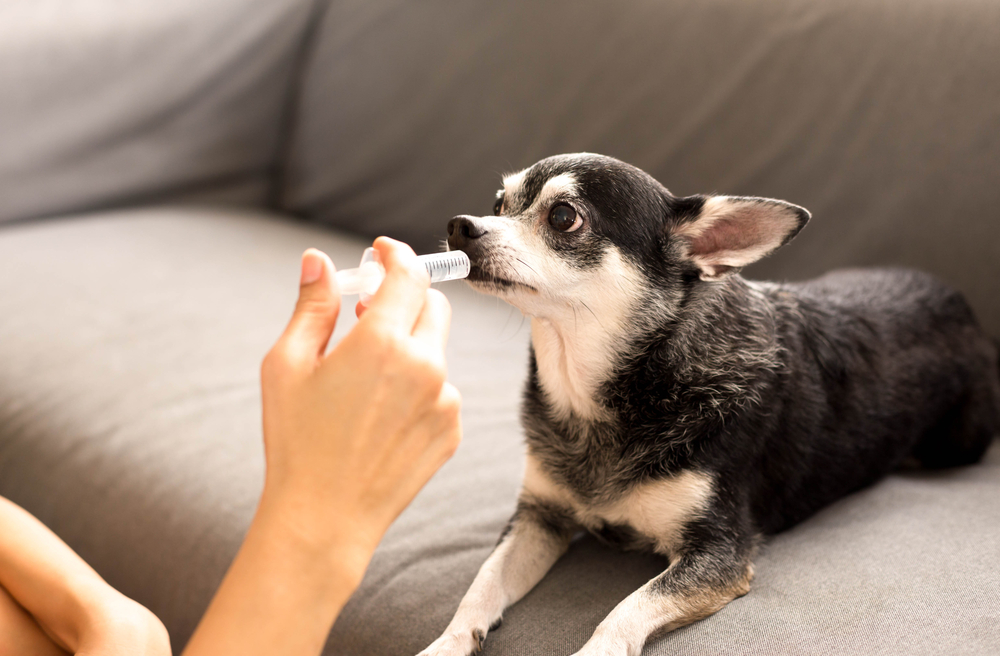Many pets experience stress and fear during a veterinary visit, which is understandable, considering they are typically poked and prodded and surrounded by unfamiliar sights, smells, sounds, and people. Our Village Animal Hospital team knows many pet owners avoid veterinary visits to protect their pet from this stressful situation, but this deprives them of vital veterinary care. We provide tips to prepare your pet for a stress-free veterinary visit to ensure they receive the care they need to stay happy and healthy.
#1: Understand how stress affects your pet
Your pet’s stressed-out response to their veterinary visit has more serious ramifications than making your day difficult. Complications include:
- Psychological damage — Some pets experience psychological damage, similar to post-traumatic stress disorder (PTSD).
- Skewed diagnostics — Stress can alter diagnostics, causing issues such as elevated heart and respiratory rates and blood pressure, as well as blood work changes.
- Health problems — Stress can trigger certain health problems such as skin disorders and feline urinary tract diseases.
- Escalating fear — Unaddressed anxiety and fear can escalate and make each veterinary visit more difficult.
#2: Recognize your pet’s stress signs
Some pets cower, tremble, and hide behind your legs, making their anxiety obvious, but others exhibit much more subtle signs. Stress signs are different in cats and dogs.
Subtle stress signs in cats include:
- Hiding
- Tensing their body
- Exaggerated swallowing
- Licking their nose
- Keeping their eyes wide and focused on the stressor
Subtle stress signs in dogs include:
- Yawning
- Panting
- Pacing
- Licking their lips
- Raising their front leg
- Showing the whites of their eyes
#3: Practice handling your pet
To perform a thorough physical examination on your pet, our team needs to touch them all over, so you should handle your pet at home to get them used to being touched. The most common problem areas are their ears, mouth, feet, and tail region.
#4: Leave your pet’s carrier in an accessible area
Many cats and small dogs see their carrier only when they visit a veterinarian, and they may associate their crate with the scary veterinary office. Leave your pet’s carrier where they typically rest or play, so they can investigate and get used to going in and out. You can also feed them in the carrier to help them make a positive association. If you can’t leave your pet’s carrier out at all times, take it out at least three days before your pet’s scheduled veterinary visit.
#5: Make your pet’s carrier comforting
You want your pet to see their carrier as a safe haven. Put their favorite blanket or your recently worn clothing inside, so they find the carrier comforting, spray the bedding with species-specific pheromones, and leave toys and treats inside.
When transporting your pet to the veterinarian, place their carrier on the floor behind the passenger seat and cover the carrier, so visual stimuli don’t upset them.
#6: Do not feed your pet before their visit
A hungry pet is more likely to accept food rewards from you and our veterinary team in exchange for their best behavior. Don’t feed your pet for several hours before their veterinary appointment, and bring a generous treat supply that you offer throughout the visit.
Not feeding your pet before their visit will also help prevent car sickness on the ride to the hospital, which could lead to anxiety before the appointment even starts.
#7: Schedule your pet’s appointment strategically
If possible, schedule your pet’s appointment for the day’s first time slot to help avoid delays caused by emergencies and issues that come up during other pets’ routine examinations. Our team strives to see all patients at their scheduled time slots, but sometimes this isn’t possible when we need time to respond to critical issues.
#8: Keep your pet in the car
Veterinary waiting rooms, especially when filled with other pets, can be especially scary for pets. Call our team from your car and keep your pet outside until our team is ready to take you into a quiet examination room.
#9: Stay calm so your pet stays calm
If you are stressed, your pet will pick up on your anxiety. Stay calm and act as normally as possible so your pet doesn’t get upset. Also, allow plenty of time to get to your appointment so you aren’t rushed and stressed.
#10: Ask if your pet needs pre-visit sedation

If these tips don’t alleviate your pet’s anxiety, pre-visit sedation may ensure an easier process for the pet and people involved. These safe medications simply make your pet a little sleepy before their appointment so their experience is less upsetting.
If you think your pet can benefit from pre-visit sedation, contact our American Animal Hospital Association (AAHA)-accredited Village Animal Hospital, so our team can determine your four-legged friend’s best option.








Leave A Comment